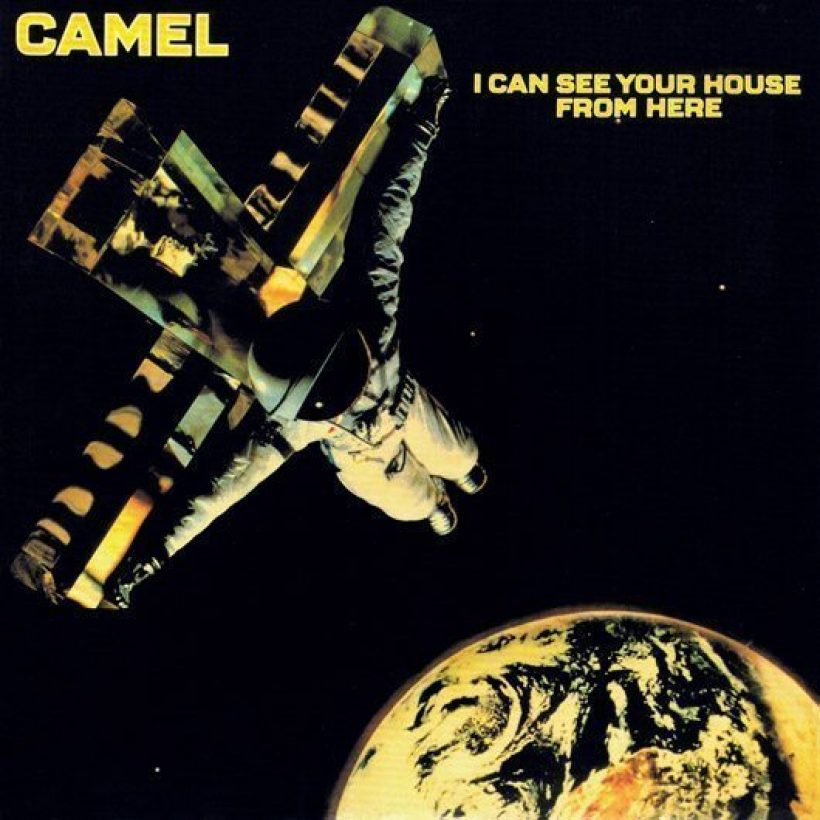reDiscover Camel’s ‘I Can See Your House From Here’
Released in October 1979, it was the band’s most eclectic album to date.

Punk is frequently scapegoated for derailing the careers of many a half-decent prog rock band, yet it failed to give Camel the hump. Far from it. Indeed, during the course of that celebrated three-chord revolution, Andrew Latimer’s much-loved, Guildford-based outfit were in their absolute pomp.
Riding high after 1975’s silver-selling, Royal Albert Hall-filling The Snow Goose, the band breezed through ’76 and ’77, and seemingly remained oblivious to punk. They followed The Snow Goose with the silver-certified Moonmadness and then ’77’s Rain Dances, which not only cracked the UK Top 40 but also introduced Camel to the US Billboard 200 for the first time.
Listen to Camel’s I Can See Your House From Here now.
The band began to absorb changing trends, however, on the following year’s Breathless, which included concise, pop-oriented tracks such as “Rainbow’s End” and even a brief foray into disco on “Summer Lightning.” Though responsible for further UK Top 30 success, Breathless marked the end of an era for Camel, as their keyboardist and founding member Peter Bardens quit prior to the band’s tour in support of the album.
Additional personnel reshuffles briefly hampered further progress, but with new bassist Colin Bass and two new keyboard maestros, Kit Watkins and Jan Schelhaas (ex-Caravan), joining forces with core members Latimer and drummer Andy Ward, Camel returned refreshed with October 1979’s I Can See Your House From Here.
Recorded at a relatively leisurely pace over the summer of ’79, with dextrous producer Rupert Hine (Rush, Kevin Ayers) at the controls, the album proved to be the band’s most eclectic to date. Both the neo-new wave of “Neon Magic” and the snappy “Your Love Is Stranger Than Mine” (the latter issued as the record’s first single) found Latimer and co flirting with the radio-friendly mainstream pop they’d dabbled with on Breathless, while the intriguing, Gary Numan-esque electro-pop of “Remote Romance” adroitly envisaged a proto-virtual world where “push-button passion” was available to all.
Despite these notable dalliances, however, Camel returned to their beloved prog and jazz roots on both the majestic “Who We Are” and the LP’s epic denouement, “Ice.” Also featuring some lavish woodwind and piano, the former was topped and tailed by Penguin Café Orchestra’s Simon Jeffes’ glorious orchestral arrangement, while the widescreen, 10-minute expanse of the latter featured one of the most breathtaking guitar solos of Latimer’s career – and it was reputedly laid down in just the one pass.
Perhaps influenced by the (then highly topical) satirical religious comedy Monty Python’s Life Of Brian, I Can See Your House From Here came housed in a sleeve featuring a spaceman nailed to a cross looking down on the earth. Though witty, this controversial image may, with hindsight, have affected the album’s chances in the charts. It nonetheless peaked at a highly respectable No.45 in the UK, while Camel roared the gospel on an enthusiastically received world tour that ran from October ’79 through to January 1980.












